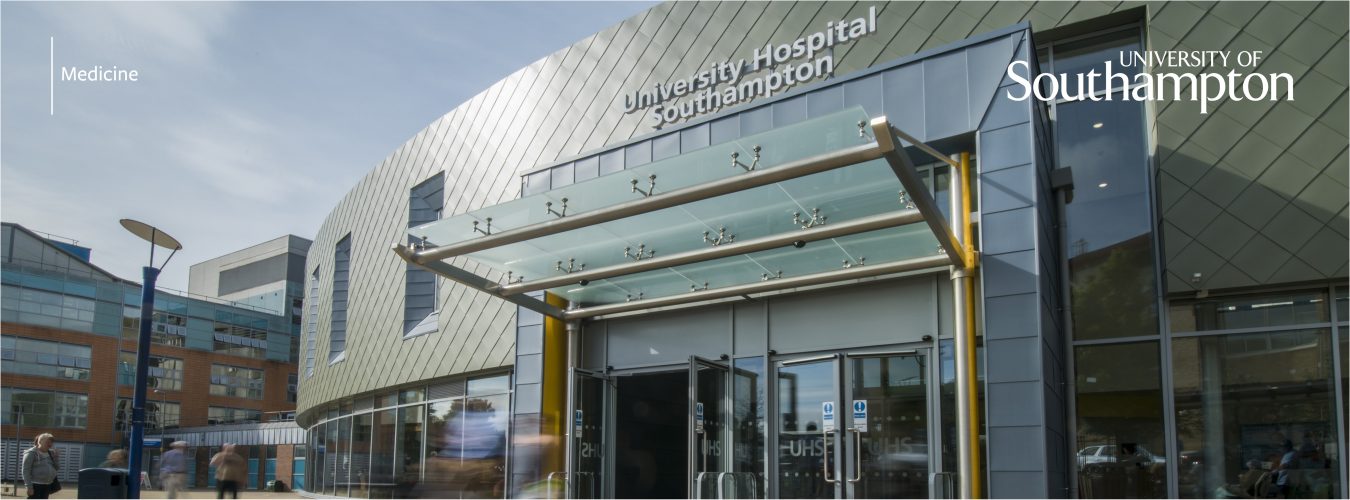‘Inspiring Stories’ with Claire Jackson
Senior Research Fellow, Clinical and Experimental Sciences
This is part of the Engaged Medicine ‘Inspiring Stories’ blog series. The blogs explore the stories behind outreach and patient-public engagement activities of staff and students from the University of Southampton’s Faculty of Medicine.
I am a senior research fellow/cell biologist and I have spent the last 15 years developing expertise in the field of Primary Ciliary Dyskinesia (PCD). PCD is a rare inherited condition, affecting approximately 1:7,754 globally, that can cause progressive lung damage, continual airway infections, fertility problems and complex organ issues (e.g., situs inversus/ambiguous); all because tiny motile ‘hair-like’ cilia do not function normally around the body. My role is to use specialist imaging to test ciliary function in the laboratory, to help diagnose PCD in patients who are referred to our NHS service. I also spend a lot of time talking to the PCD Support UK charity (led by PCD patients with their families and friends), finding out what they need to learn to better understand this condition. My research at the moment is mostly orientated towards understanding why PCD patients are susceptible to airway infection, and finding out why some patients are symptomatically worse than others depending on their specific genotype. At the moment we know that mutations in over 50 genes are responsible for causing approximately 70% of PCD cases. By examining cilia inside and out microscopically and growing nasal epithelial cells we can ‘model’ patients’ airways in a dish.
Over the years I have developed or been involved in different ‘cilia’ outreach projects such as giving interviews to the media, hosting secondary school children doing work experience, going into schools or in the FOM/UHS ‘Life Lab’. Recently, I organised a ‘cilia flash mob’ at the Southampton Science and Engineering Festival (SOTSEF) on main campus (Public Engagement with Research unit (PERu) funded). This involved getting the general public to behave like cilia. People stood side by side up a set of stairs outside Biological Sciences, and to ‘M People’s’ “Movin on Up”, they passed sponges and green cloth above their heads (from behind to front, in a Mexican wave-like action). This helped everyone involved to understand the simple concept of ‘mucociliary clearance’ in our airway and anyone, of any age, could take part. It worked well until I accidentally started singing through a loud hailer and a nice lady suggested afterwards (with a chuckle) that perhaps I shouldn’t. I was very pleased to receive the ‘SOTSEF outreach innovation prize’. I’ve also demonstrated live cilia down a microscope (UHS open day, SOTSEF and the New Forest show), but COVID-19 ruined this over the last two years. In 2020 I designed a ‘PCD Lab Live’ online for children with PCD to attend through the PCD Support UK charity. Together with James Thompson we live presented a series of pre-recorded amateur lab interviews and videos from the PCD lab (in our PPE). You can see one of our videos here. We also combined this with demonstrating 3D printed cilia models (bringing microscope images to life; a PERu funded project) that James had made, which showed the children how cilia can be internally abnormal in different ways. We explained how these different structural abnormalities caused different abnormal movements and even completely static cilia. To engage the children further, we challenged them to ‘beat the scientists’ with their questions and a child won a mini-USB microscope for the best question. We were delighted to answer questions from parents too, particularly about PCD inheritance. This has led on to another outreach ‘PCD films’ project with clinical UHS colleagues. We are in the post-filming stage of processing four 2-3 minute short films about the patient experience coming to our national service. We hope that this will reduce anxiety around getting a diagnosis, help patients to realise why testing can take time and the importance of them engaging with treatment. Following on from a twitter comment I made about our PCD Support UK funded national PCD service film project, I was invited to speak at the Birmingham Community Healthcare NHS Foundation Trust led ‘Pulmonary Rehabilitation Awareness Online Conference’ in January 2022. They just wanted me to inspire ideas for colleagues to engage their patients because treatment adherence is often an issue. Sometimes others just need to be shown that outreach is possible and impactful.

I have always felt personally rewarded and satisfied to take part in public outreach, particularly alongside other like-minded colleagues. Not only are you helping someone to understand what you do, but in doing so you naturally become more aware of what messages are most important and how to best deliver them. This transfers into any other form of science communication, whether it be on twitter, at a conference/meeting, or in how you write. Each time I present I learn from my last experience and it always becomes easier and new ideas come to mind. As your confidence grows it’s easier to help others starting out for the first time too. It has been my pleasure to mentor other staff members just starting out and I am also now an accredited Engager Mentor through the Engagement Accreditation Scheme. If anyone wants to talk to me about their ideas for outreach, I’d be happy to share what I know and try to help you. I hope to, at least, be able to point you in the right direction for support.
With best wishes, Claire
clj@soton.ac.uk
@_Claire_Jackson
Stay Connected! To find out more about the ‘Inspiring Stories’ series, Faculty of Medicine educational programmes and research, or to get involved use the links below or contact Dr Lucy Green.

University staff or students click here for the Engaged Medicine SharePoint.


